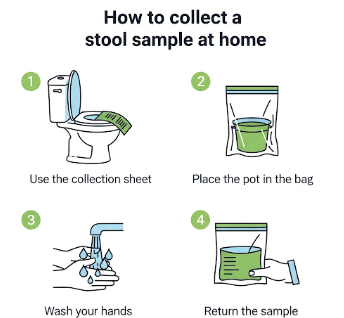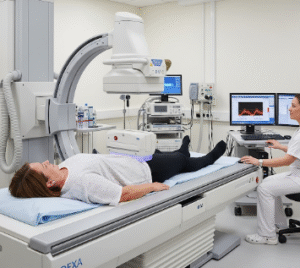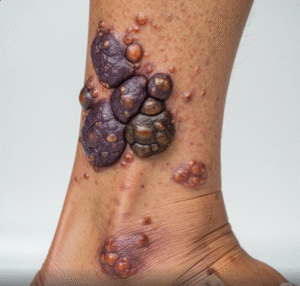What it is
A stool (poo) sample is a small amount of feces collected for laboratory testing to diagnose gastrointestinal infections, parasites, blood in stool, or digestive disorders. Collecting a proper sample is essential for accurate laboratory results.
Key points:
- Used to detect bacterial, viral, or parasitic infections, digestive problems, or occult blood.
- Can be collected at home or at a clinic depending on the test requirements.
- Helps doctors confirm diagnoses and recommend appropriate treatment.
- Typically requires fresh stool collected using clean tools and proper storage.
Why it’s done
Stool sample collection is performed for various reasons:
- Diagnosis of infections: Detects bacteria like Salmonella, E. coli, or Clostridium difficile, viruses, or parasites.
- Detect gastrointestinal bleeding: Stool may contain hidden blood indicating ulcers, polyps, or cancer.
- Monitor digestive health: Evaluate conditions like malabsorption, inflammatory bowel disease, or chronic diarrhea.
- Screen for parasites: Identifies infections from protozoa or helminths.
Note: Stool tests are non-invasive, quick, and highly informative when collected and handled correctly.
Alternatives
Alternatives or complementary methods include:
- Blood tests: For inflammation markers or anemia due to bleeding.
- Urine tests: Rarely used to detect systemic infections affecting digestion.
- Endoscopy or colonoscopy: Direct examination of the gastrointestinal tract.
- Imaging tests: Ultrasound, CT scan, or X-ray for structural issues.
- PCR or molecular tests: Detect specific pathogens from stool samples.
Important: Stool sample collection is often the simplest and most direct method for detecting gastrointestinal issues.
Preparation
Proper preparation ensures accuracy and contamination-free collection:
- Check instructions: Follow your doctor or laboratory’s guidance regarding dietary restrictions or medication before collection.
- Collect materials: Stool collection kit, clean container, gloves, disposable scoop, and sealable bag.
- Avoid contamination: Do not mix stool with urine, water, or toilet paper unless instructed.
- Timing: Collect fresh stool—ideally morning sample—and deliver to the lab promptly.
Patient instructions:
- Wash hands thoroughly before and after collection.
- Wear gloves if provided.
- Label the container with name, date, and time of collection.
- Keep the sample refrigerated if there’s a delay in transport, unless otherwise instructed.
How it’s done
Collecting a stool sample involves several simple steps:
1. Preparation of collection area:
- Use a clean, dry surface or a special collection container placed in the toilet bowl.
- Avoid contamination with toilet water or cleaning agents.
2. Collecting the stool:
- Use the scoop or spatula provided to take a small sample from different parts of the stool to ensure representativeness.
- Place it into the sterile container.
3. Sealing and labeling:
- Close the container tightly to prevent leaks or contamination.
- Label with personal details, date, and time.
4. Transport to the laboratory:
- Deliver as soon as possible; if delayed, refrigerate at 2–8°C.
- Follow any special instructions for specific tests, such as parasite cultures or occult blood tests.
Recovery and Benefits
Although stool collection is not a treatment, it provides several benefits:
- Accurate diagnosis: Helps identify the cause of gastrointestinal symptoms like diarrhea, blood in stool, or abdominal pain.
- Targeted treatment: Allows doctors to prescribe appropriate antibiotics, antiparasitics, or other medications.
- Prevent disease spread: Identifies infectious pathogens, helping prevent transmission to others.
- Monitoring health: Used for follow-up testing in chronic digestive conditions.
Tip: Proper collection ensures reliable results and reduces the need for repeated testing.
Complications
Stool sample collection is generally safe, but minor issues may include:
- Contamination: Using toilet water or touching the sample with unwashed hands can affect test results.
- Spillage: Improper sealing may cause leakage.
- Odor: Stool has a strong smell; proper sealing minimizes discomfort.
- Allergic reaction: Rarely, latex gloves may cause irritation.
Prevention:
- Follow lab instructions carefully.
- Use gloves and provided scoops.
- Ensure the container is tightly sealed and labeled correctly.
Treatment Options in Korea
In Korea, stool sample collection is standard practice in hospitals and clinics:
Key features:
- Available at general hospitals, diagnostic labs, and specialized gastroenterology centers.
- Collection kits are provided for home use or in-clinic sampling.
- Labs offer testing for bacteria, viruses, parasites, blood, and digestive markers.
- Results are typically available within 24–72 hours, depending on the test.
- Korean hospitals follow strict hygiene and laboratory safety standards to ensure accurate results.
Summary: Proper collection of a stool (poo) sample is simple, safe, and essential for accurate gastrointestinal diagnosis. Following instructions, maintaining cleanliness, and timely submission to the lab ensures reliable results for effective treatment and monitoring.













